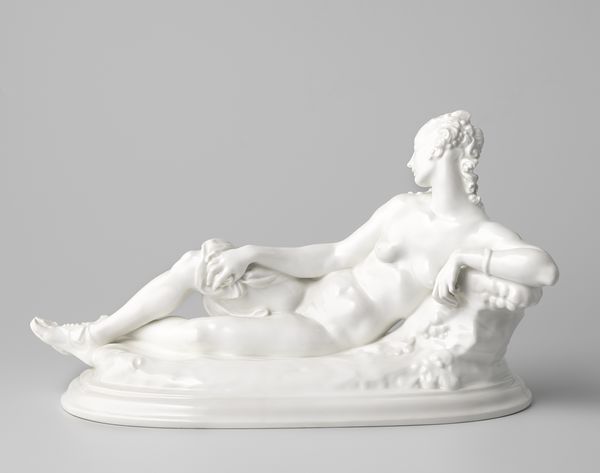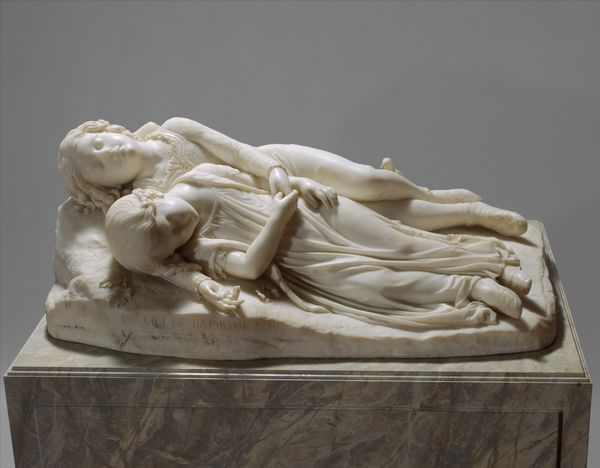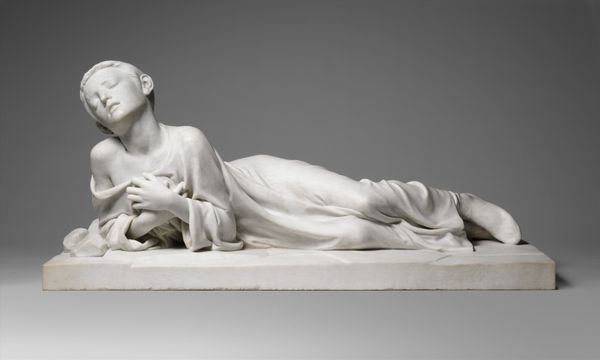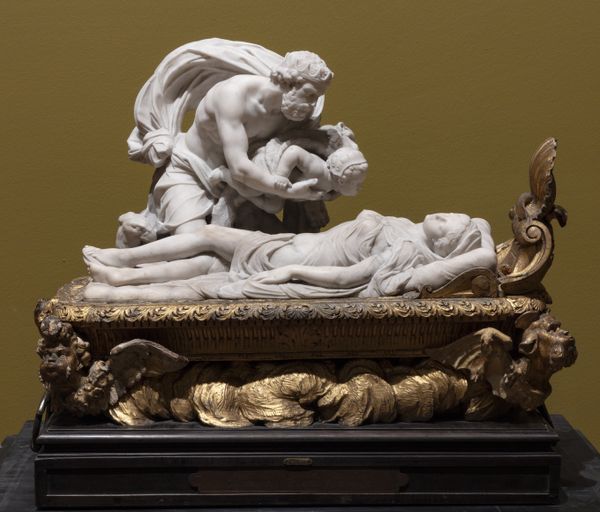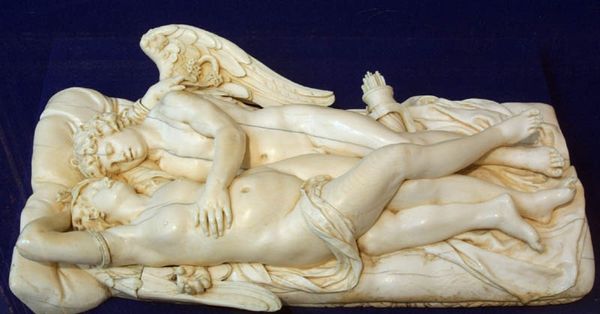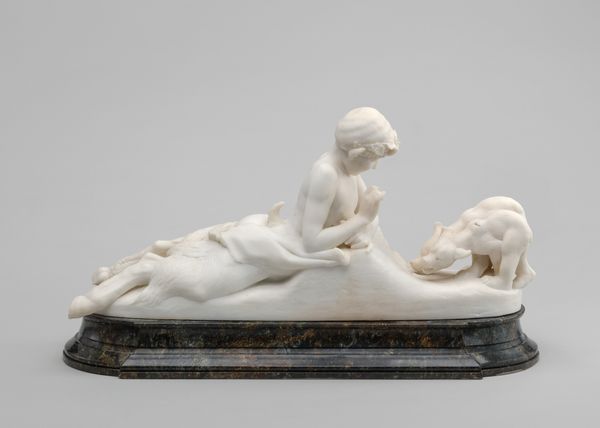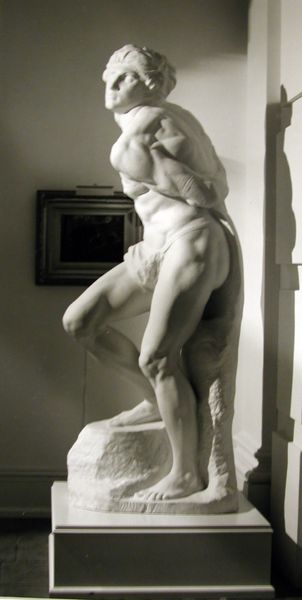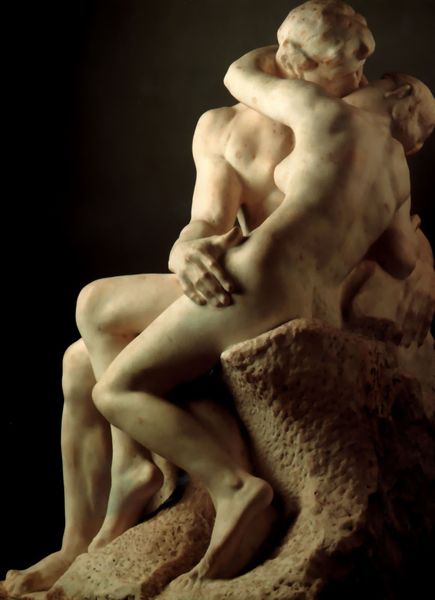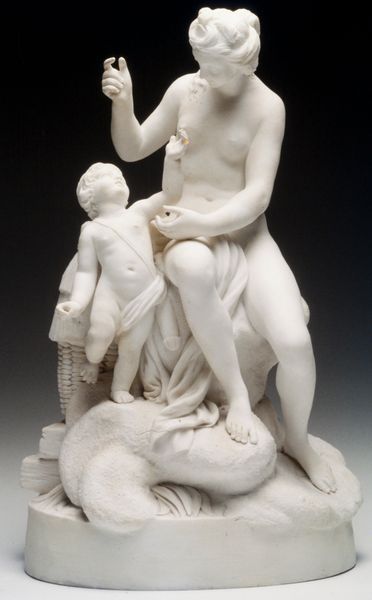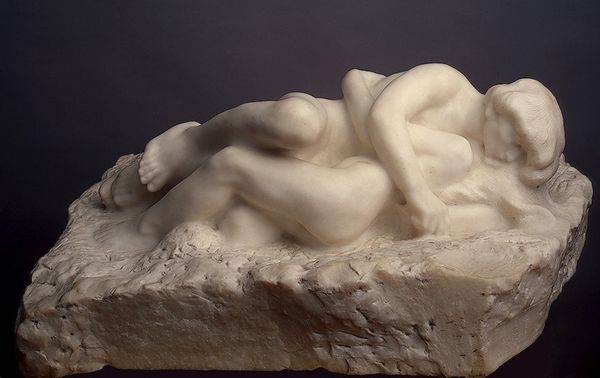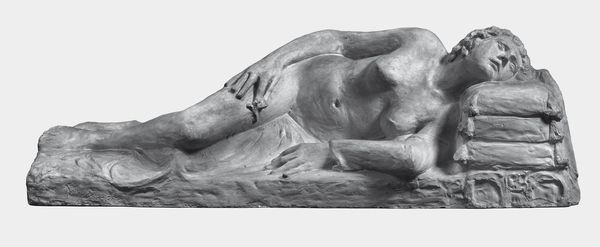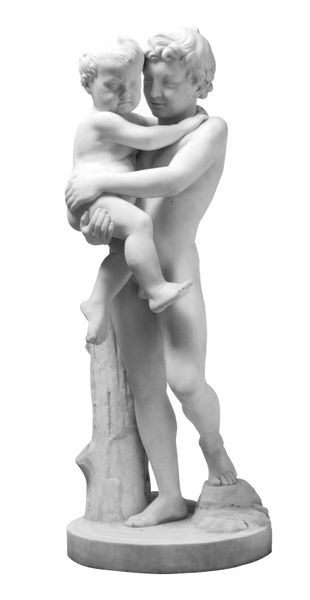
sculpture, marble
#
portrait
#
death
#
sculpture
#
sculpture
#
romanticism
#
academic-art
#
marble
#
nude
Dimensions: 20 1/4 x 54 1/2 x 19 1/2 in. (51.4 x 138.4 x 49.5 cm)
Copyright: Public Domain
Editor: This marble sculpture, titled "Mexican Girl Dying," was crafted by Thomas Crawford between 1846 and 1848. The figure's languid pose and partially draped form feel undeniably romantic, but I’m curious about its layered meanings, especially considering its title. What do you see in this piece? Curator: Immediately, I’m struck by the juxtaposition of idealized form and the bluntness of the title. The so-called "Mexican Girl" wears what seems to be a feathered headdress, a powerful, albeit possibly misconstrued, symbol often associated with indigenous cultures. Is Crawford commenting on the romanticized, tragic fate assigned to certain cultures, their perceived inevitable decline? Consider how her gesture, clutching her chest, and averted gaze might signal vulnerability, even erasure, within a larger narrative. Editor: So, the feathers and the title are loaded. Are you saying it’s more than just a sentimental depiction of death? Curator: Absolutely. It asks us to unpack whose story is being told, and *how*. Look at the craftsmanship; the polished marble itself implies permanence and idealized beauty, creating a stark contrast with the ephemeral nature of life and the loss implied by the title. Are these conflicting symbols meant to reconcile? Does one attempt to subdue the other? Editor: I see now. It’s not just about death, but about how cultures and identities are represented and perhaps misrepresented, in art. Curator: Precisely. And remember that Crawford was working in a time of expansionist ideas and romanticizing indigenous culture. Can this piece give voice, and, if not, does it ask *us* to? Editor: That adds so much depth. It really makes me rethink how I initially saw it – the beauty alongside those unsettling cultural undertones. Curator: Exactly. The layers of symbolism demand critical engagement and reveal much about the period’s attitude toward cultural identity. Editor: Well, that's definitely changed my perspective! I’ll never look at a neoclassical sculpture the same way. Thank you.
Comments
No comments
Be the first to comment and join the conversation on the ultimate creative platform.
